The content of the article
- 1 How to recognize a flea
- 2 Varieties of Domestic Fleas
- 3 How fleas enter a house
- 4 Where do fleas come from?
- 5 Are fleas dangerous to humans?
- 6 How to get rid of domestic fleas
- 7 Preventative measures
- 8 Ways to deal with fleas in pets
- 9 How to get rid of earthen fleas
- 10 Video: how to remove fleas in an apartment with folk remedies
Of all the uninvited guests who appear in apartments and private houses from unknown sources, the most unpleasant are fleas and bedbugs. Even more disgusting than cockroaches. Because they do not feed on food waste, but on blood, including human blood.
Flea bites are so painful and dangerous that you can hardly tolerate this depressing neighborhood for a long time. In the fight against the parasite, any means are used - from grandmother's methods with laying out strongly smelling plants to ultramodern biochemical preparations. The short-term effect is achieved in most cases, but far from everyone gets rid of bloodsuckers forever.
The well-known axiom that it is necessary to fight not with the consequence, but with the cause, works in the case of domestic fleas. Before declaring war on them, get to the bottom of the problem: who, how and why got into your home?
How to recognize a flea
The flea squad is numerous, they live in all natural zones and on all continents, but especially like heat and moisture. A temperate and subtropical climate is the optimal habitat, and summer and early autumn are a period of increased activity.
The insect, on average up to 5 mm in size, has a body flattened from the sides, a hard chitinous cover with spikes and tentacles, three pairs of strong limbs, and a piercing-sucking proboscis. A flea, like most external parasites, eats in reserve, so its abdomen is disproportionately large, hypertrophied and stretches as it is full. In addition, not completely digested residues of blood in the feces are a breeding ground for numerous offspring.
To make sure that fleas are found in the apartment, and not other blood-sucking insects, compare your observations with the characteristic features of the flea presence.
If there are many parasites, you can see them. A distinctive feature is jumping in height up to one and a half meters. The jump itself, due to the microscopic size of the insect and the incredible speed, we observe as the instant disappearance of the insect from the field of view.
If you manage to catch a flea, try crushing it with your nails. An irrefutable proof of the belonging to the genus of these ectoparasites will be a characteristic click during the mechanical destruction of the chitinous shell.
Diagnose a flea infestation of the premises by bites. Firstly, they are very painful, because, before sucking, a flea, unlike bedbugs, does not inject a special analgesic enzyme into the victim. Secondly, the wounds are located mainly on the legs, crowded, in a chaotic manner. At the site of the bite, a rather severe itching is felt, a secondary allergic reaction may appear.
Flea mud is another sign of infection. You can see it on the fur of animals, pile of carpet, bedding. These are brown lumps, which, when wetted with water, acquire a reddish hue - from the remnants of undigested blood.
Varieties of Domestic Fleas
Of the more than two thousand species of fleas, only a few that can penetrate the premises are dangerous to humans. It is they who get us with their importunity, and also serve as a source of more serious consequences - allergies, serious infections, diseases of pets.
The main flea groups got their name from the preferred “breadwinner,” although they can bite any warm-blooded victim if necessary.Despite the established stereotypes, ectoparasites do not live permanently in the hairline of an animal or a person and feel great in nests, cages, booths, rugs, dusty and humid places. Your neighbors may be:
- Cat flea - one of the largest, reaching a length of 16 mm during egg laying. It is easy to diagnose in cats around the peritoneum, tail, ears, neck.
- Dog - a close relative of cat fleas, can parasitize together on the same carrier.
- Rat - the most dangerous group of parasites, rodents are the peddler: rats, mice, guinea pigs, hamsters. They are also called basements - by habitat.
- Rabbit - more common in the wild, in places of accumulation of burrows of animals.
- Chicken - prefers birds, affects not only poultry, but also parrots, canaries, pigeons. Serious infection can lead to anemia, exhaustion and even death of the wearer.
- Human - a brown insect 1.5–3.0 mm long, a carrier of the plague pathogen, can cause helminthic invasion.
- Earth flea - the least dangerous to humans, does not bite, as it does not eat blood, but plant foods. It poses a threat to green spaces.
How fleas enter a house
There are several options for the settlement of fleas in a living room.
Pets
Almost everywhere parasites come from carriers - domestic animals: cats, dogs, hamsters, rabbits, decorative birds, etc. If a four-legged or feathered friend is not provided with timely help, adults — adults, will lay eggs. The animal, combing it out, scatters them wherever it is necessary, you will carry them with shoes all over the house, the larvae will develop in warm and dusty places, pupate. The infection process has been successful, and will continue to advance exponentially.
Insect dungeons
In some regions with a warm climate, for example, in Crimea, an invasion of fleas is akin to a vulture - appears in a certain period, inspires fear, and then disappears safely until the next year. Such an attack is characteristic of multi-storey buildings of an old design with dirty and wet basements. From June to September, fleas are activated and can penetrate upwards on several floors, populating the apartments of even the cleanest owners. Several varieties of parasites live in basements at once, rats are more common. These are the most dangerous from the point of view of transportation of various pathogens.
Unsanitary conditions of neighboring rooms
If you’re out of luck with your neighbors who turned your apartment into a breeding ground for cockroaches, fleas, two-tail and other evil spirits, getting rid of the penetration of creatures galloping and climbing into all holes will not be easy. Due to their microscopic dimensions, they seep through cracks, ventilation passages, and cracks. Fleas can get into the living rooms of the upper floors from the attic, especially if it is dusty and cluttered, doves live under the roof, birds nest.
Accidental hit
The factor of chance is not excluded, but it will work only under certain conditions. If, for example, you are in a dusty basement all day for work, and then, without changing clothes, you come home, then it is quite possible that you will bring several new inhabitants. But even in this case, in order to start breeding, they need to get into a suitable habitat.
Where do fleas come from?
Fleas, like most parasites and pests, prefer unsanitary conditions. In secluded, untidy corners they find shelter for themselves and food for the larvae. These insects love old, dust-soaked carpets, wardrobes with packed, unworn clothes for years, old soft toys, and other rubbish that you don’t use, and it's a pity to throw them away.
At risk are lovers of all kinds of animals on a limited area.The denser the apartment is populated by animals, the greater the probability of sooner or later being bitten by fleas. A combination of love for smaller brothers and a dislike for systematic cleaning will create ideal conditions for little vampires.
The flea population is growing rapidly in damp, heated rooms with poor ventilation - bathrooms, boiler rooms, pantries, basements. Residents of lower floors should unite to jointly combat parasites, because removing them from a single apartment, while maintaining the source of distribution, is unrealistic.
In a private house with outbuildings, a poultry house, rabbitry, dog kennel, from which fleas can spread to other rooms, can become a source of infection.
Are fleas dangerous to humans?
No matter how insignificant the bite of this insect is, it is still unpleasant, especially if small children are attacked. Constant contact with parasites is fraught with a real threat to health, both real and potential.
A large number of bites causes an allergic reaction of the body. Itching wounds when combing become inflamed, it is easy to introduce an infection into them. Without proper treatment, the skin may even become festering with ulcers. The tension from waiting for constant bites can develop into a phobia, leading to neuralgic disorders.
Fleas are carriers of pathogens of deadly diseases, from which millions of people died a few hundred years ago. Through a microscopic puncture in the skin, dangerous biological agents can enter the human body:
- plague wand;
- tuberculosis bacteria;
- salmonella sticks;
- hepatitis viruses, tick-borne encephalitis;
- the causative agent of typhoid and others
According to the degree of danger, a rat flea, a potential carrier of plague bacillus, and a bird, a nursery of salmonella, should be distinguished. Especially fraught with bites of ectoparasites for young children who have not undergone immunization.
In addition, fleas are an active carrier of worm eggs; they can be planted not only by animals, but also by humans.
How to get rid of domestic fleas
Having carefully analyzed the causes and sources of infection of the home with ectoparasites, we proceed to their destruction. Events should be carried out in a complex, only in this case one hundred percent success is guaranteed.
Destruction of foci of infection
If there are pets in the house, start with them. With the help of special shampoos and drugs we poison fleas. Inspect the sleeping places. Treat bedding and rugs with preparations, then wash, change loose bedding in cages, nests, houses.
It happens that the source of infection is outside the walls of the apartment. Together with your neighbors, call SES representatives or order a service from a specialized organization to process the basement or attic.
Preparatory Activities
After eliminating the causes of flea infestation, proceed to create conditions favorable for humans, but unbearable for bloodsucking parasites.
General cleaning start with washing, knocking out, airing and drying the bedding and accessories, carpets, paths, textiles. Disassemble the rubble in the cabinets and without regret part with everything that you do not use for a long time. Using a vacuum cleaner, a damp cloth and detergent, remove dust in the corners, on the walls, baseboards, furniture, shelves, niches, floors. Sprinkle carpets with a mixture of salt and baking soda in equal proportions and rub it into the pile. The next day, vacuum up the garbage.
If the apartment has a source of damp, you need to get rid of it. Look through water and sewer networks, eliminate leaks. Install forced ventilation if necessary.
Adequate control measures: pest control
You can choose the drugs in proportion to the infection yourself, or use the services of specialists.At the time of processing, the apartment should not have people and animals from several hours to a day. After disinfestation is complete, the room must be thoroughly ventilated, the remnants of the poisonous substance should be wiped from all horizontal surfaces.
The following agents can serve as an example of effective insecticides:
- Raptor - A popular low-toxicity spray. The solution must be sprayed, paying particular attention to cracks and cracks in the floor, doors, under the baseboards.
- Sentry (USA) - A spray based on pyriproxifen kills not only fleas, but also larvae, prevents the development of eggs, eliminates unpleasant animal odors. The drug treats the likely places of accumulation of pests, all hard surfaces at a height of up to 1.5 m, sleeping places for pets.
- Delta Zone - Korean product in the form of a suspension. To be divorced in water and applied during wet cleaning. It has a good antiparasitic effect with a long (up to 8 weeks) period of residual exposure and low toxicity.
- Actibiol IGR Flow (Spain) - a drug that allows you to destroy the pest population, as it has an insect growth regulator in its composition. Available in the form of a suspension, diluted with water. Apply to the surface by spray or sponge. It is odorless.
- Tetrix (Netherlands) - a professional tool for narrowly targeted lethal effects on blood-sucking parasites. Available in concentrate form. The prepared emulsion is sprayed or rubbed into the surface. Depending on the proportions, it is successfully used both in heavily infected rooms and for preventive purposes.
- Vergus (France) - a professional biochemical preparation for all crawling, jumping and flying insects, made on the basis of microcapsule technology. Its main advantage is a residual exposure period of up to 10 months, during which it exerts a deadly effect on insects.
Processing of the room by specialists
When fighting insects on their own, they often make the same mistake — they don’t process hard-to-reach places where eggs and larvae are kept, which subsequently leads to reinfection. This is not possible if professionals are involved. Modern irrigation equipment - ULV installations, GAP generators spray active substances in the form of cold and hot fog - particles of ultra-small volumes with high penetrating ability.
Pest control by experts has several advantages:
- apply only certified professional tools;
- use modern technology for fumigation;
- the insecticide is sprayed in microdoses that are lethal to insects, but safe for humans and animals;
- to solve the problem comprehensively;
- along with fleas, they destroy other crawling pests - bugs, cockroaches, ticks, ants.
- advise on avoidance of repeated invasion.
Preventative measures
To get rid of the annoying neighborhood forever, it is important to remember and follow a number of rules.
Be sure to re-fumigate the premises after 2-3 weeks - during this period, the surviving eggs will turn into larvae. They need to be eliminated.
In the house, it is necessary to create a barrier protection on the path of migration of the potential enemy - to treat off ventilation pipes, door and window openings, cracks with repellent drugs (repellents).
For prevention, absolutely harmless folk remedies are suitable. Place fresh wormwood, tansy, and chamomile grass on the baseboards, under the furniture, on the lower shelves of the cabinets, in the ventilation ducts, and dried — use as bedding for birds, rabbits, hamsters, and guinea pigs. Good fleece scare away sawdust from cedar, fir with a sharp turpentine odor.
Constantly monitor the condition of pets and disinfect at the first sign of the appearance of fleas.
From time to time, carry out the deratization of basements, sheds and other places of probable habitat of rodents. According to regulatory documents, this must be done at least once a year.
Ways to deal with fleas in pets
Protecting your beloved pet from blood-sucking parasites, it is important to remember about a systematic approach and prevention.
To remove a settled population, shampoos, aerosols, and insecticide-based drops are used. The drugs are usually toxic, therefore, when using, the safety measures specified by the manufacturer must be observed. Carefully approach the processing of animals with low weight, cubs. Even a small overdose can lead to fatal consequences. According to consumer reviews, such tools are effective:
- Drops Stronghold (USA) - low toxic repellent substance for the treatment of cats and dogs. Apply a few drops to the withers.
- Front line - high-quality, but rather toxic spray for dogs with a long period of residual exposure.
- Harz (USA) - A popular line of drugs, presented by mild disinfecting shampoos, sprays, protective drops for cats and dogs, their offspring.
- Canina Vermineks (Germany) - a product based on biological ingredients, low toxicity, suitable for cats, dogs, birds, rodents.
The protective function after the disinfection procedure is well performed by special collars soaked in natural repellents. Products of the Chistotel, Bayer, Kanin, Bafar, Sarzhants brands are valid from 4 to 8 months.
How to get rid of earthen fleas
Our review will be incomplete if we do not touch on the problem of earthen fleas that can cause irreparable damage to garden and horticultural crops. Gluttonous booger plants are especially fond of cruciferous plants - cabbage, radish, daikon, mustard, horseradish.
The common thing with this flea insect is only its jumping ability and small size. In reality, it is a beetle that feeds on leaves and stems of plants, sucking juices out of it. It hibernates in fallen leaves, lays its eggs here, larvae mature. In the spring, as soon as the sun warms up, starving bugs jump out of the litter, attacking the plants - hence the popular name of earthen fleas.
If you do not fight the garden flea, it can destroy radish seedlings, cabbage seedlings, lettuce, literally riddling the leaves with small punctures.
Several effective ways to deal with them
Spray the culture with the insecticides Prestige, Calypso, Proteus from Bayer or any other drugs against the Colorado potato beetle. This should be done at the beginning of the growing season and the first appearance of pests.
From folk remedies, infusions of walnut shells, tobacco dust, tansy, wormwood are effective. They process the aerial part of the plant and watered under the root.
As preventive measures, you can do the following:
- Abundantly water the beds early in the morning with cold water - this species of fleas is afraid of an excess of moisture.
- Near the cruciferous plant garlic, potatoes, tobacco, celandine.
- Observe crop rotation.
As experience shows, even careful observance of hygiene rules and impeccable care for pets does not give a 100% guarantee against the penetration of bloodsucking parasites into the house. But timely detection and adequate measures will allow you to get out of an unpleasant situation as a winner and with minimal losses.
Video: how to remove fleas in an apartment with folk remedies

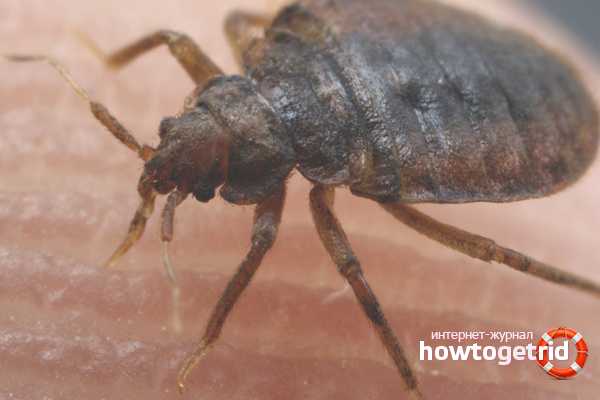
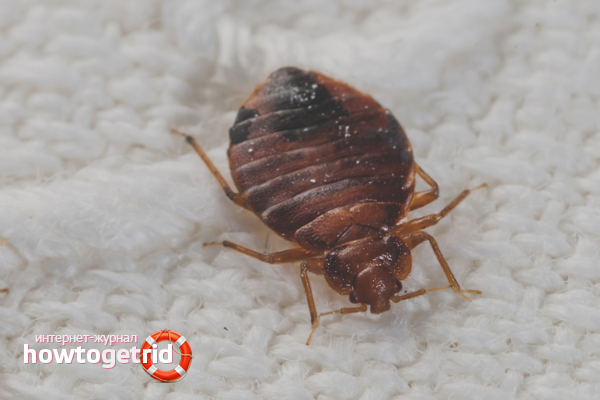

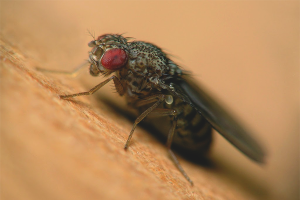
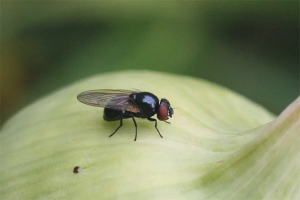
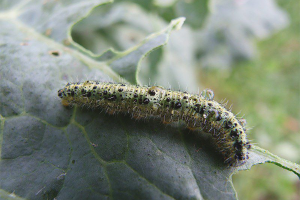
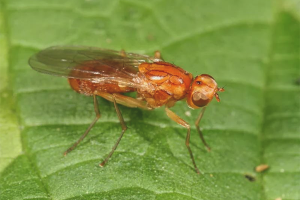
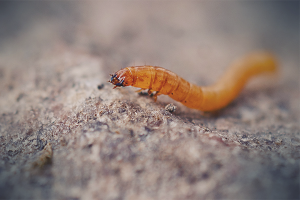
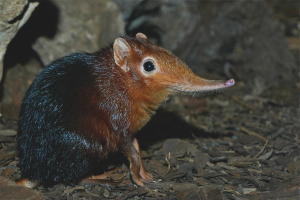
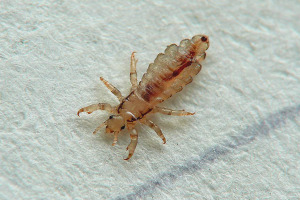
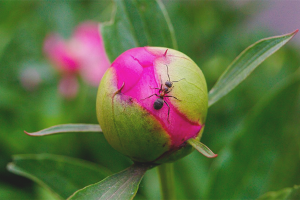
Submit